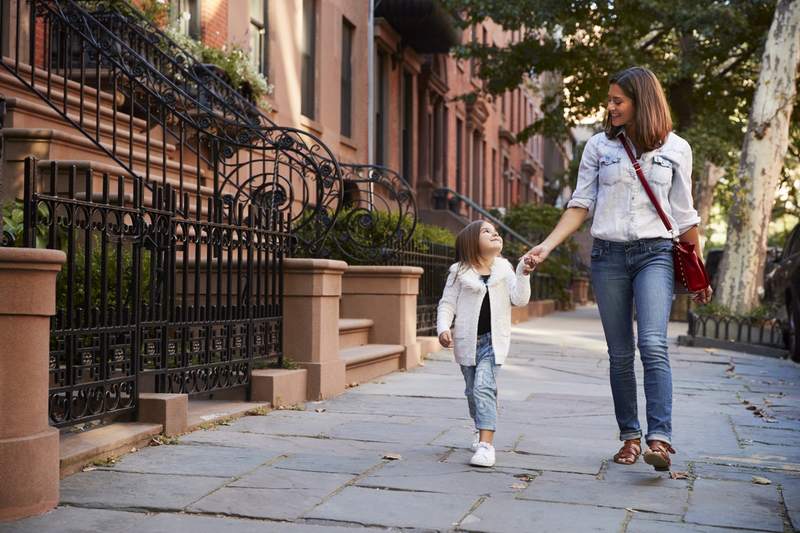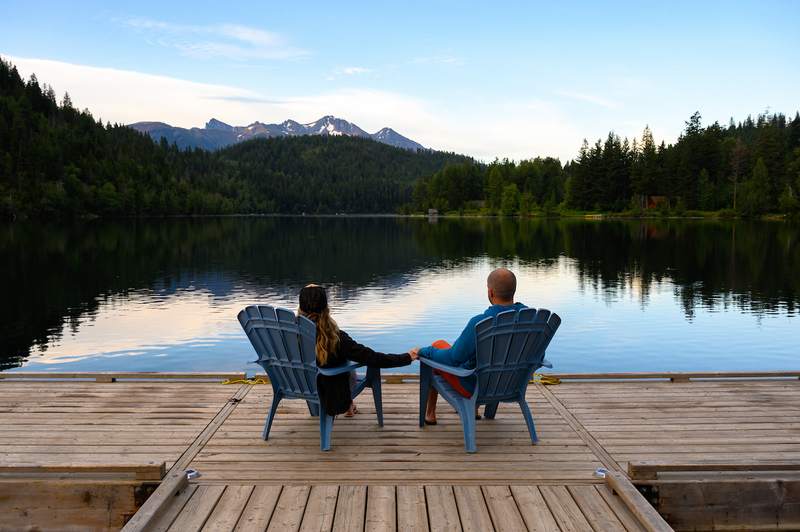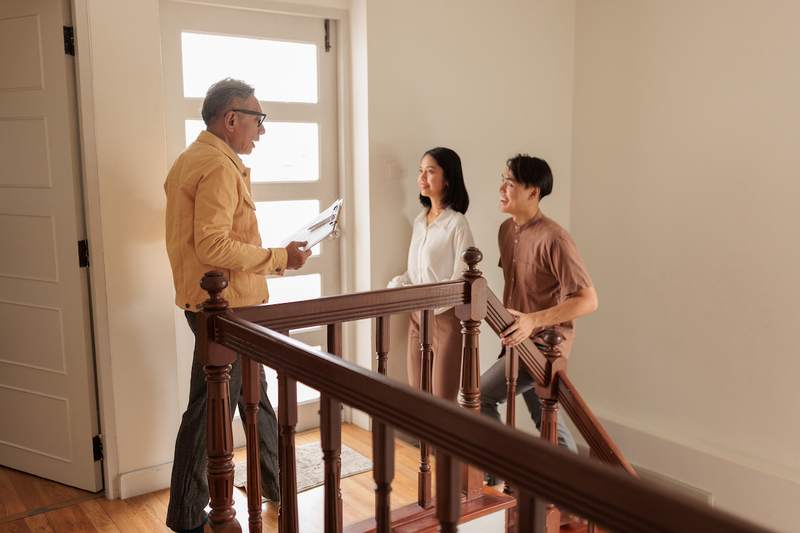Brownstones are classic American homes built mostly in the 19th century in East Coast cities. They remain popular and in high demand today thanks in part to their appearances in classic films and TV shows typically set in New York, such as 1961’s “Breakfast at Tiffany’s”and 1989’s “Do the Right Thing.”
While they long have epitomized stylish, urban living, it’s not always clear exactly what a brownstone house is. Here’s a look at these iconic homes, why they’re so popular, and the pros and cons of owning one:
- Brownstone Definition
- Brownstone Maintenance
- Forms of Brownstone Deterioration
- How Much Does It Cost To Live In a Brownstone?
- Advantages of a Brownstone
- Disadvantages of a Brownstone
- Is a Brownstone Right for You?
- FAQ: What Is a Brownstone?
- The Bottom Line on Brownstones
Brownstone Definition
A brownstone house is a building made from a soft, dark sandstone that’s typically three to five stories tall. Because the stone is easy to cut in any direction, many brownstones feature ornate designs that give the building a sophisticated look. Brownstone houses get their color from a hematite iron ore that turns the stone a chocolate brown.
Brownstones are known to have tall ceilings and carved fireplaces, and are especially popular in New York City. They are mostly built of bricks, with the brownstone used to create the facade and other details. A classic Brooklyn brownstone features a front stoop that leads up to the parlor floor, which sits atop the garden level. Several additional stories might sit atop the parlor level.
History of brownstones
Brownstone is mined from quarries typically located in the Northeastern United States. It became a popular building material in the 1800s because it was less expensive than other materials like granite, limestone, and marble.
The arrival of Romanticism in the 19th century led to homebuyers seeking more natural-looking buildings. Brownstone became more affordable thanks to mining technology advancements made during the Industrial Revolution, such as the use of steam-powered machinery. It also grew in popularity because it was less flammable than other materials, which helped reduce many homeowners’ fears of home fires. From there, brownstone houses exploded in popularity for those seeking a chic urban lifestyle.
Their popularity lasted into the 20th century, when changing styles and a growing scarcity of brownstone caused them to fall out of favor. While brownstones are no longer being built, existing homes enjoy an enduring popularity and are seen as sophisticated and fashionable. These days, many brownstone buildings have been split into multifamily homes.
Brownstone vs. townhouse vs. row house
Like townhouses and row houses, brownstones are narrow buildings built in a row and attached to other homes on at least one side. Some people use the terms “brownstone,” “townhouse,” and “row house” interchangeably, but there’s a key difference: Brownstone houses have a facade made of, well, brownstone, while townhouses and row houses do not.
Brownstone Maintenance
Because brownstone is a porous and layered material, it is susceptible to the elements and can erode over time. Not all brownstone is created equal, and some facades deteriorate faster than others.
You may want to schedule a home inspection to examine the condition of a brownstone, but you can also conduct an initial investigation yourself. Some things you’ll want to check when inspecting a brownstone include:
- Color. Is the brownstone one brown color, or made up of different-colored stone? If the brownstone is multicolored, it could be an indication of repairs or even a brownstone imposter.
- Pattern. Are there veins or swirls in the stone? This could be a sign of weathering.
- Texture. Is the texture hard or weathered? Nonuniformity of hardness in the stone can also be a sign of weathering.
- Surface tooling. Are the decorative surface patterns intact, or are there parts breaking off and missing?
- Previous repairs. Has the entire surface of the stone been repaired in the past during a home improvement? Were these repairs done properly, and are these repairs deteriorating?
Here are some steps you can take to help preserve brownstone and prevent its decay.
- Clear the gutters. This allows water to drain properly and clears debris. It’s recommended that you clear the gutters at least twice a year.
- Repair the roof. If there’s a leak in the roof, repair it immediately. Water damage to a brownstone can be severe and costly.
- Fill any cracks. Caulking open joints and cracks prevents water damage.
- Remove exterior ivy and vegetation. Vegetation traps water and prevents the surface of a brownstone from drying out completely.
- Use flashing to protect the ledges. Flashing prevents water from entering a structure, and is important for areas where water can accumulate, such as ledges.
- Repoint mortar. Crumbling mortar joints should be fixed immediately. Repointing should be done by a qualified mason with material that is softer and more porous than the brownstone. Hard mortar can worsen the problem.
Forms of Brownstone Deterioration
Brownstone houses are commonly found in East Coast cities. The colder weather and wetter conditions there can accelerate deterioration. Also, the salt often used to keep roads from freezing can recrystallize in mortars and break down the brownstone.
Here are some common forms of brownstone deterioration.
Disaggregation
Disaggregation is the loss of cohesion between the grains that make up brownstone. It occurs when water in the stone evaporates, sometimes from salt recrystallization. Disaggregation can lead to brownstone erosion, and most commonly occurs in sheltered areas susceptible to a lot of moisture.
Contour scaling
Contour scaling is also known as crust formation or blistering, and leads to the deterioration of the brownstone’s surface. This can result in a chipped, discolored, and brittle texture to the surface of the stone. Contour scaling is caused by salt seeping into the stone, often occurring in areas of frequent wet-dry cycling.
Exfoliation
Exfoliation is caused by poorly cemented layers in a brownstone. Exfoliation can cause layers within the stone to separate and come loose, which is unsightly and detrimental to the structural integrity of the building.
How Much Does It Cost To Live In a Brownstone?
A brownstone house is a highly sought-after real estate asset, but buying one will cost you. In high-price areas like Brooklyn, it’s rare to find a brownstone for sale for less than $2 million.
“The cost of living in a brownstone varies depending on the size, location, and amenities of the property,” says Jasen Edwards, chair of the agent editorial board at Agent Advice in Santa Barbara, California. “Generally speaking, brownstones in larger cities can cost anywhere from $1 million to $3 million to purchase, and monthly rental prices can range from $2,000 to $10,000 per month.”
Advantages of a Brownstone
Owning a brownstone house comes with some nice perks. Here are a few advantages of living in a brownstone.
Stylish and sophisticated
Brownstones stand out along tree-lined city streets, and their historic details give their owners a unique sense of home.
“Brownstones are popular because they are known for their classic, timeless style, and often feature beautiful architectural details,” Edwards says. “They are also seen as a symbol of status in many cities and are commonly associated with wealth and affluence.”
Good structural quality
Many brownstone houses were built by expert craftspeople who put a lot of attention and work into the details that make a property unique. Even older buildings requiring restoration benefit from the high quality of that workmanship and the structural integrity it provides.
“They are also known for their durability, as their brick and stone construction has stood the test of time,” Edwards says.
Space and location
Inside, brownstone houses usually have a multifloor layout that’s larger than an apartment or condominium. Plus, brownstones are often found in walkable areas.
“Many brownstones are located in desirable urban areas, which can increase the value of the property over time,” Edwards says.
Disadvantages of a Brownstone
Brownstone living doesn’t come without drawbacks. Here are some of the downsides of buying a brownstone.
Brownstones can be expensive
You can expect brownstone houses to command a larger price tag because they have more square footage, multiple stories, and often a convenient location. Owners are also responsible for all repairs and maintenance — potentially expensive for an older building — adding to the long-term cost of owning a brownstone.
You’ll share at least one wall with a neighbor
Unless you own the entire brownstone building, your home will share at least one wall with another structure. This puts you in closer proximity to your neighbors and offers less outdoor space than a stand-alone single-family house.
Brownstone imposters
Some similar-looking buildings could be marketed as brownstones to cash in on their popularity. While a home might feature the signature front stoop, buildings with facades built with red or yellow bricks are not true brownstones.
Is a Brownstone Right for You?
If you’re wondering whether a brownstone house might be the right home for you, it really comes down to your priorities and lifestyle.
“Brownstones have become a symbol of urban charm and sophistication,” says Shaun Martin, owner and CEO of We Buy Houses in Denver.
If you want to live in an urban area with more space than an apartment, then a brownstone might be a good middle ground between a condo and a single-family home. If you’ve been looking at townhouses but want more architectural character, then a brownstone could be the answer you’re looking for.
“In addition to the historic look and feel that brownstones provide, they offer a unique living arrangement compared to other styles of buildings,” Martin says. “They are often located in desirable neighborhoods due to their close proximity to amenities like parks and shops. Brownstones can also be conveniently remodeled to modernize the interior or maintain their traditional charm.”
FAQ: What Is a Brownstone?
Here’s a look at the answers to some frequently asked questions about brownstones.
Improper methods of repairing brownstones include:
– Repointing with mortar that is too hard.
– Coating deteriorated stone with cement.
– Painting over cracks or joints in the stone.
– Abrasive cleaning methods, such as sandblasting or high-pressure water blasting.
– Waterproofing or coating the stone in a water repellent.
Brownstones are common in East Coast cities. Brownstones in New York, Boston, and Philadelphia are especially popular.
The exact number of rooms will vary depending on the brownstone. However, you can expect at least three stories of living space.
The Bottom Line on Brownstones
Most brownstones aren’t cheap, but they are often beautiful and spacious. Buying a brownstone can be a good investment for those who are eager to become homebuyers but don’t want to leave behind city life. It’s also a great way to get more space in urban areas without sacrificing a sense of neighborhood community.






